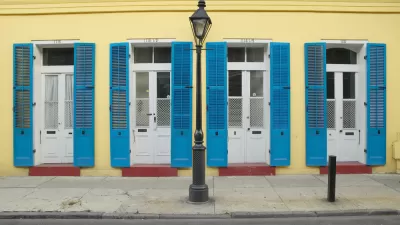Residents in the Kalamazoo, MI area voted on Tuesday to maintain and expand bus service by passing a 0.75-mill tax. They can expect more frequent and late night service to be provided by the new Central County Transportation Authority.
The transit measure was vital to the one-year-old Central County Transportation Authority, a function of the Kalamazoo County Government, which covers Kalamazoo and the surrounding cities and townships. It will allow CCTA to maintain and expand Kalamazoo Metro Transit.
"The (0.75-mill) levy runs through 2020 and replaces the current 0.6-mill levy levied in the city of Kalamazoo, which expires at the end of this year," writes Julie Mack for MLive.com. According to Investopedia, millage rate is "(t)he amount per $1,000 that is used to calculate taxes on property."
The tax will cost $45 a year on a home that has a market value of $120,000 and a taxable value of $60,000, which is about the average for the county. The millage is projected to raise $3.5 million in 2016.
As a result of the measure's passage, Metro Transit will provide new Sunday fixed-route service, and weekday service from 10 pm to midnight. In addition, it will "support the transit system's transition from diesel-fuel buses to hybrid-battery buses," adds Mack.
Millages play a crucial role in funding Metro Transit, according to the Kalamazoo County Transportation Authority's funding breakdown:
State Grants - 34 percent
Property Tax Millages - 29 percent
Fares - 21 percent
Federal Grants - 14 percent
Other - 2.5 percent
Correspondent's note: It's nice to see Kalamazooans support their local transit service, as it will complement the new 110-mph intercity rail service to Chicago thanks to federal high-speed-rail stimulus funding.
Hat tip to AASHTO Daily Transportation Update.
FULL STORY: New transit tax OK'd by 62% Kalamazoo-area voters in Tuesday's election

Alabama: Trump Terminates Settlements for Black Communities Harmed By Raw Sewage
Trump deemed the landmark civil rights agreement “illegal DEI and environmental justice policy.”

Planetizen Federal Action Tracker
A weekly monitor of how Trump’s orders and actions are impacting planners and planning in America.

The 120 Year Old Tiny Home Villages That Sheltered San Francisco’s Earthquake Refugees
More than a century ago, San Francisco mobilized to house thousands of residents displaced by the 1906 earthquake. Could their strategy offer a model for the present?

Opinion: California’s SB 79 Would Improve Housing Affordability and Transit Access
A proposed bill would legalize transit-oriented development statewide.

Record Temperatures Prompt Push for Environmental Justice Bills
Nevada legislators are proposing laws that would mandate heat mitigation measures to protect residents from the impacts of extreme heat.

Downtown Pittsburgh Set to Gain 1,300 New Housing Units
Pittsburgh’s office buildings, many of which date back to the early 20th century, are prime candidates for conversion to housing.
Urban Design for Planners 1: Software Tools
This six-course series explores essential urban design concepts using open source software and equips planners with the tools they need to participate fully in the urban design process.
Planning for Universal Design
Learn the tools for implementing Universal Design in planning regulations.
Clanton & Associates, Inc.
Jessamine County Fiscal Court
Institute for Housing and Urban Development Studies (IHS)
City of Grandview
Harvard GSD Executive Education
Toledo-Lucas County Plan Commissions
Salt Lake City
NYU Wagner Graduate School of Public Service





























